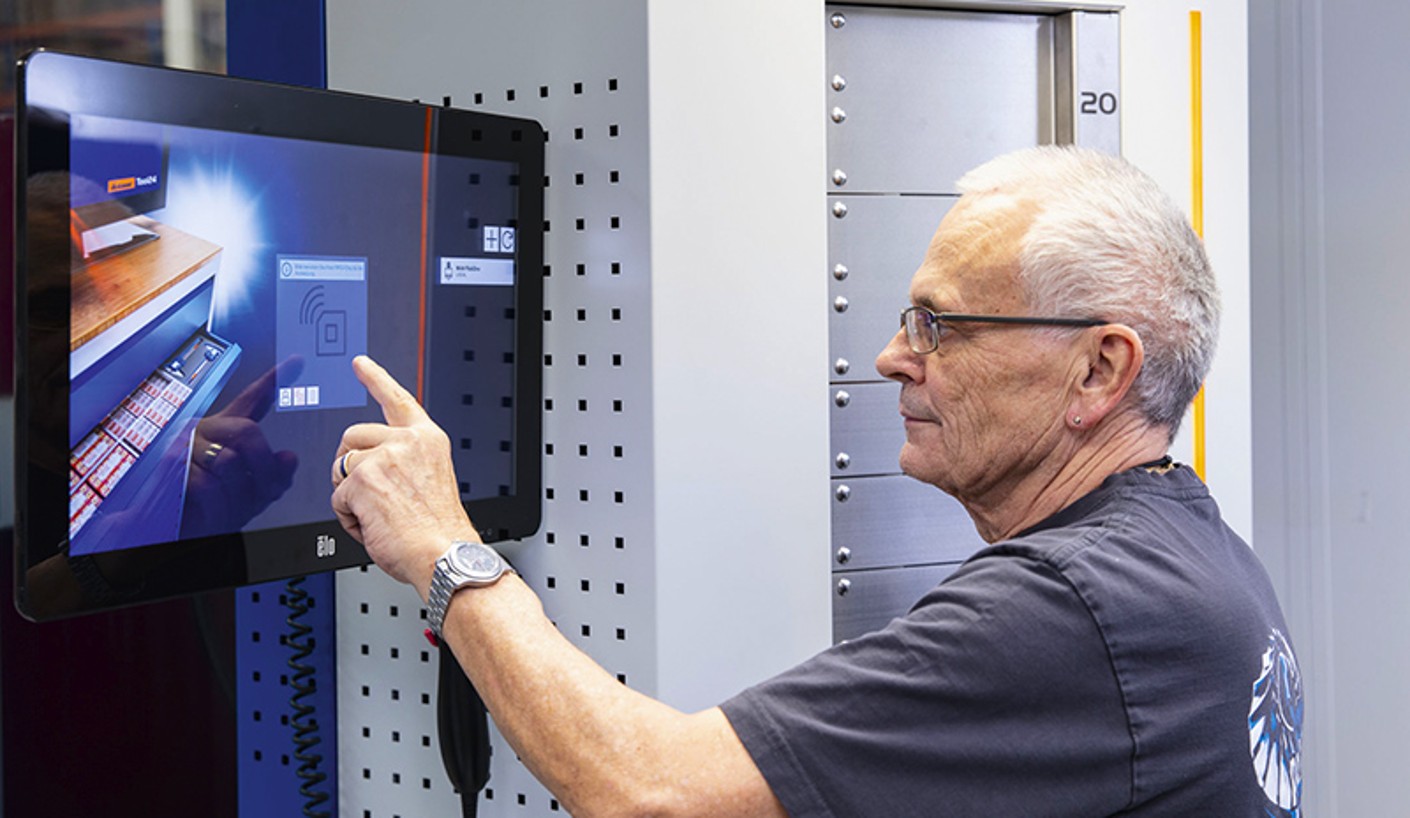Our expert know-how for the procurement of personal protective equipment
How to choose hearing protection, breathing and foot protection correctly and optimize your purchase

Many companies are currently having to make cuts and there's often savings potential even when it comes to personal protective equipment (PPE). For example, the number of PPE items approved for purchase can be reduced, the number of suppliers consolidated and the procurement process further automated. In the interview, Alexandra Kovacs, PPE project manager at the Hoffmann Group explains how holistic concepts for personal protective equipment can reduce costs while improving safety at work.
The Hoffmann Group stresses the motto "Increasing safety by making cuts". How should we understand it?
Kovacs: The range of PPE items available has continuously increased over the last few years. Purchasing lists have consequently been growing increasingly long and complex in many companies. Additionally, employees also have special requests. In many cases, primarily in organisations with multiple sites and decentralised purchasing, this has resulted in uncontrolled growth in the number of items. This not only makes procurement complex and slow, but also makes negotiating better terms more difficult, as a large number of small orders are made instead of one bulk order. We therefore recommend streamlining the list of items regularly, creating a PPE standard catalogue that is mandatory across the company, standardising the ordering processes and revising the purchasing guidelines. This makes the PPE procurement simpler and special orders can be reduced to a minimum. Safety at work is often increased as a result of this, as only uniformly tested and inspected PPE is used.
What has to be taken into account when developing a sustainable concept?

Kovacs: It is important to involve all affected interest groups in the decision-making process. This includes, for example, strategic purchasers, company doctors, safety engineers, production managers, subsidiary managers and, of course, the employees. The latter, as the intended users of the PPE, should have the opportunity to not only examine the products, but also test them out. To ensure a high level of acceptance in the long term, the quality should not only meet minimum requirements, but higher-quality items should also be included in the catalogue. In order to determine minimum requirements and protection classes, we recommend carrying out a detailed workplace inspection and hazard analysis beforehand. The PPE requirements are defined for all workplaces and the various work areas are assigned safety levels as part of this process. Considering the wide array of products available on the market, you have to prepare yourself for the fact that the decision-making process will take longer for some PPE products.
What method is suitable for finding consensus as quickly as possible?

Kovacs: A tried-and-tested method is starting with products that barely differ from one another in terms of complexity and, if necessary, can be replaced again quickly. This includes hearing, head, eye and breathing protection. Agreement can quickly be reached for these products. On the other hand, areas that require more effort are only worked on at the end. For example, foot protection is a more complex issue, as shoes have to have the right fit. In order for this to be the case, employees' feet have to measured precisely and any health limitations have to be reviewed and incorporated. Defining a minimum number of shoe models which cover the greatest needs with regard to wearing comfort, design and also the specified safety standards and offering shoe models that the employees can choose between is advisable here. Shoe models with a multi-width system and various cushioning classes are also particularly beneficial here, as they are suitable for both narrower and wider feet and can be matched to the wearer's body weight. When it comes to shoes and protective work wear, it is recommended that you allow small pilot groups around the globe to test the available products. After all, clothing sizes are different in various countries, meaning that a t-shirt that is size M in Germany may be a size L in other countries. Country-specific particularities must therefore be taken into account. The duration of the wear test is defined on an individual basis. In general, it is four to six weeks.
More and more companies are providing their employees with uniform work clothing. What has to be taken into account when doing so?

Kovacs: Using corporate design as a guide can actually help to curb the wide variety of work clothing products. Additionally, having the same gear can boost the sense of belonging and staff loyalty. Employees can usually quickly be won over if having a limited colour range therefore means higher-quality products are available. Employees should also be given a certain amount of freedom when choosing the style – for example being allowed to choose two tops from a set of t-shirts, sweatshirts and polo shirts. In order to emphasise the corporate identity, clothing is generally embellished with the company logo – either with embroidery directly on the material, an embroidered emblem, transfer printing or laser etching.
A PPE cooperation partner therefore has to be able to do quite a few things in order for a project to be successful. How can you find the right partner?

Kovacs: The PPE cooperation partner should have a very wide PPE product range in order that you can purchase as many products as possible from a single source and can negotiate better prices. They should also have a professional advisory service that can clarify questions on site and actively assist subsidiaries with wear tests, training courses and instructing employees. They should also be able to provide assistance when it comes to improving the procurement processes, as they are still being tested in order that you can achieve more potential savings with a large order through increased pooling of individual orders.
Can you give us an example?

Kovacs: Certainly. For example, MAN Energy Solutions has introduced our GARANT Tool24 PickOne individual issuing system at their Zürich site. The PPE procurement process has been fully automated and sped up by 75 percent. There is now only one main supplier and that is the Hoffmann Group. If an item has reached an order level, GARANT Tool24 PickOne automatically sends an order to us. Now there is only a blanket purchase order for a pre-determined value, which the individual orders created by the GARANT Tool24 PickOne are deducted from. This eliminates the need for purchase requisitions and individual orders. Once the order value has been used up, then the next blanket purchase order is created. As incoming goods are also posted with the blanket purchase order, time-consuming individual postings on the system are no longer necessary. Any deviations in stock levels are determined the next time the system is filled. The procurement process has therefore been shortened from 5 – 8 days to 2 days. We supply the goods within 24 hours of the order being received and they are sent directly from goods receiving to the machine.

With goods issuing systems such as GARANT Tool24, companies can also ensure that the required PPE is available around the clock. An integrated reporting system allows you to demonstrate that every employee was able to withdraw the PPE they required at any time and also did this. Furthermore, user profiles can be created so that employees can only access the PPE items approved for their work area. This further increases safety in the company.
Direct purchaseAdd an article directly to the cart: Please state article number or article code here.Products found:
-
Article no. {{ combinedCodeWithHighlight }}Article code:EAN / GTIN:Manufacturer number:
No products were found for your search term
Please check your entry or adjust the article number / article code
This article cannot be ordered.Services cannot be ordered without the right article. Please add the service to the desired article.Further configurations on the product detail page are necessary for this article.Please check this specification or adjust the article number / article code.Please select a specific variant.An error found the way into our system.This article is not available anymore.Multiple items can be added via our Order form.Sign in to your Account







 Find out more
Find out more